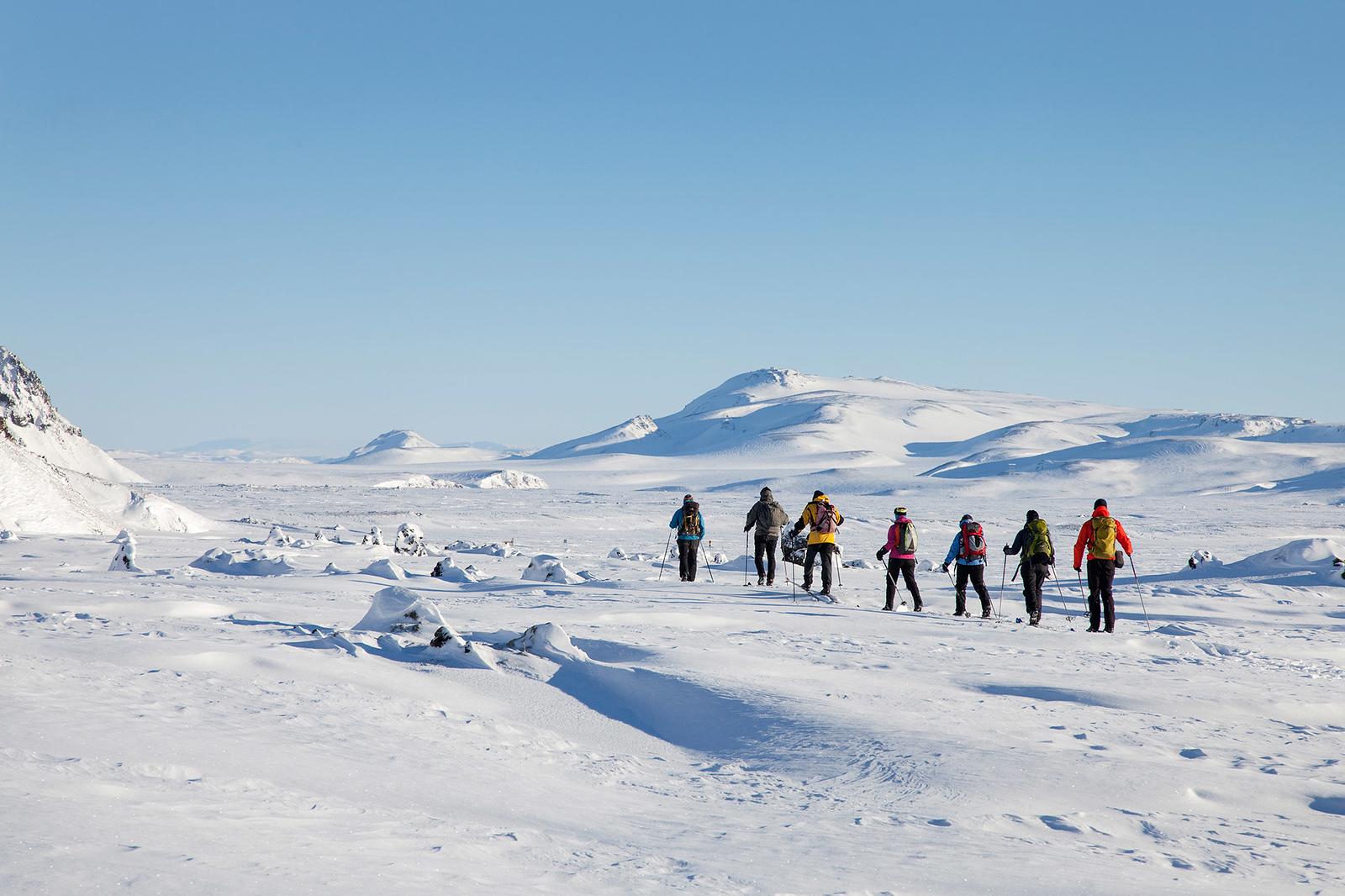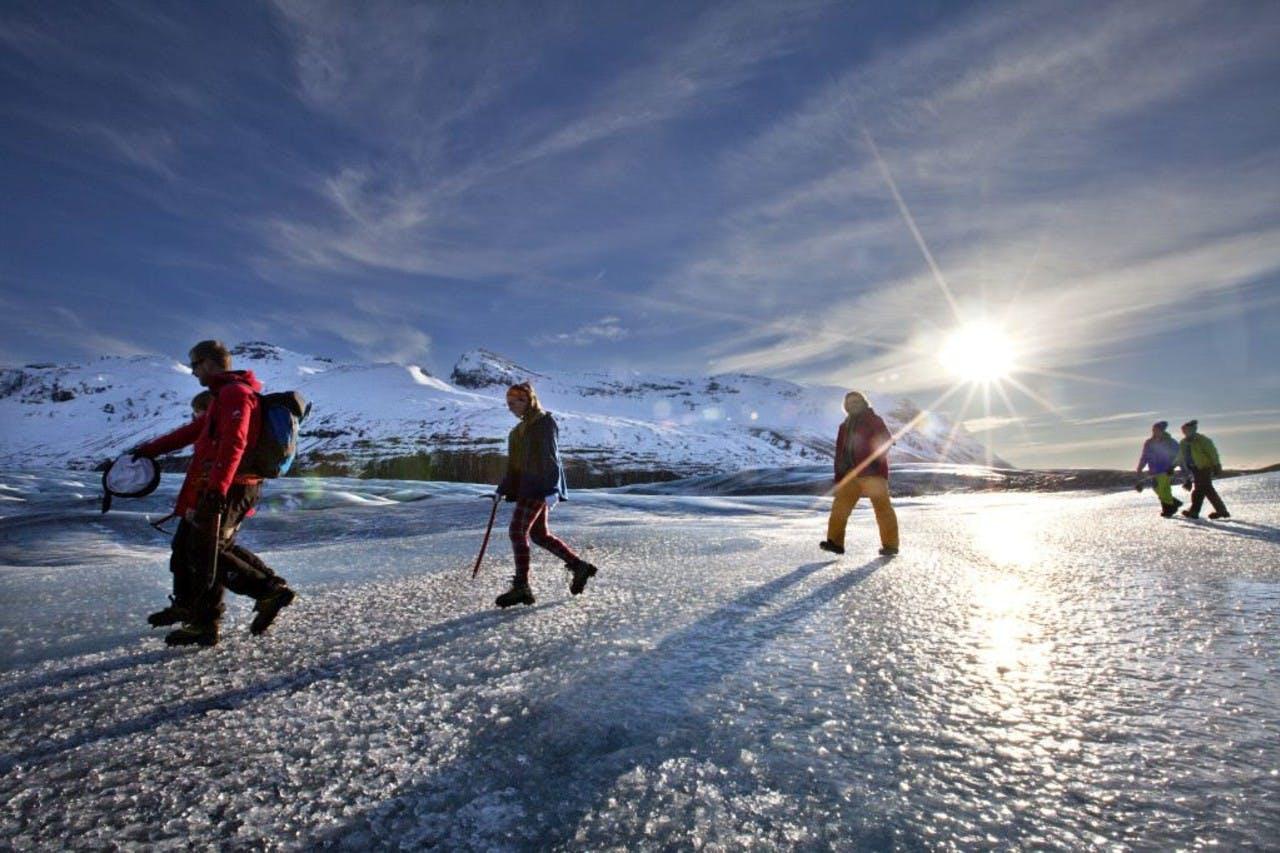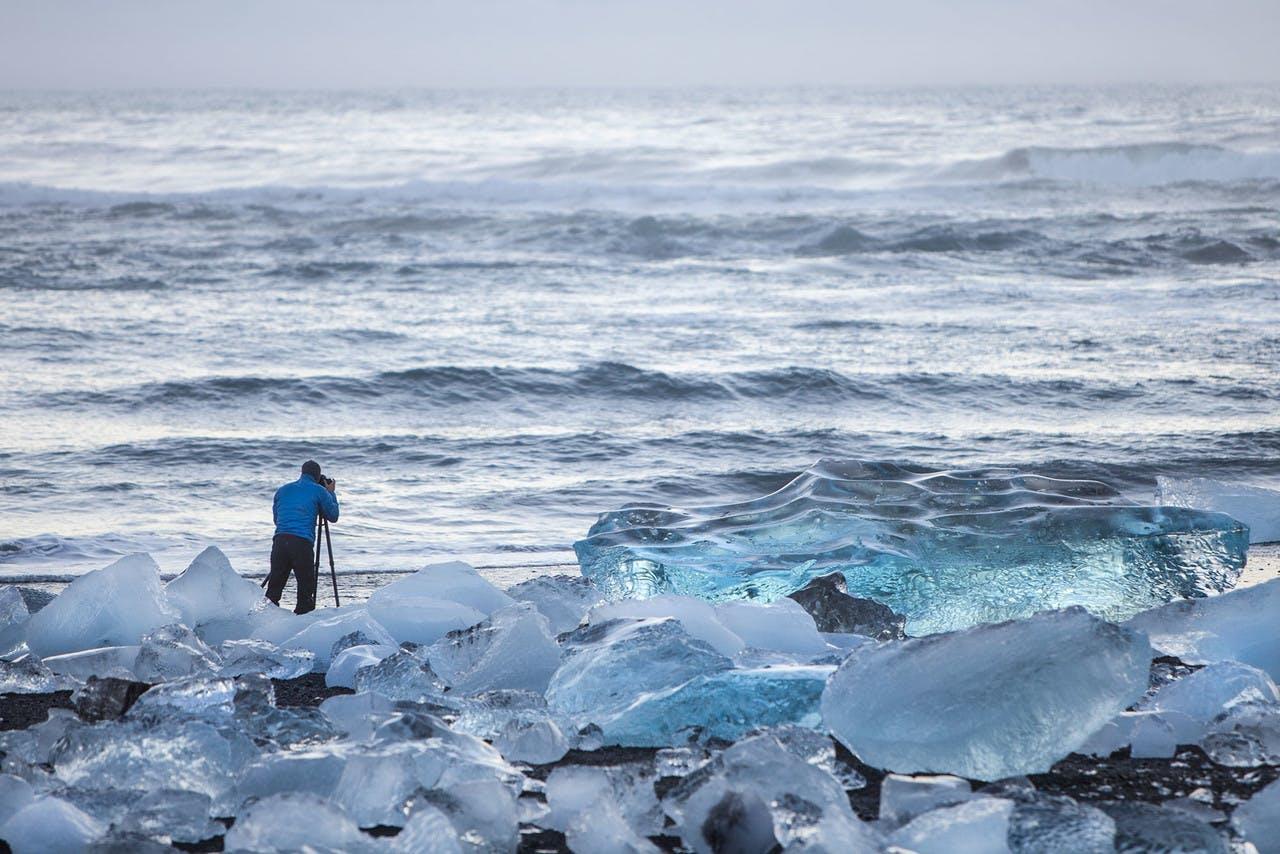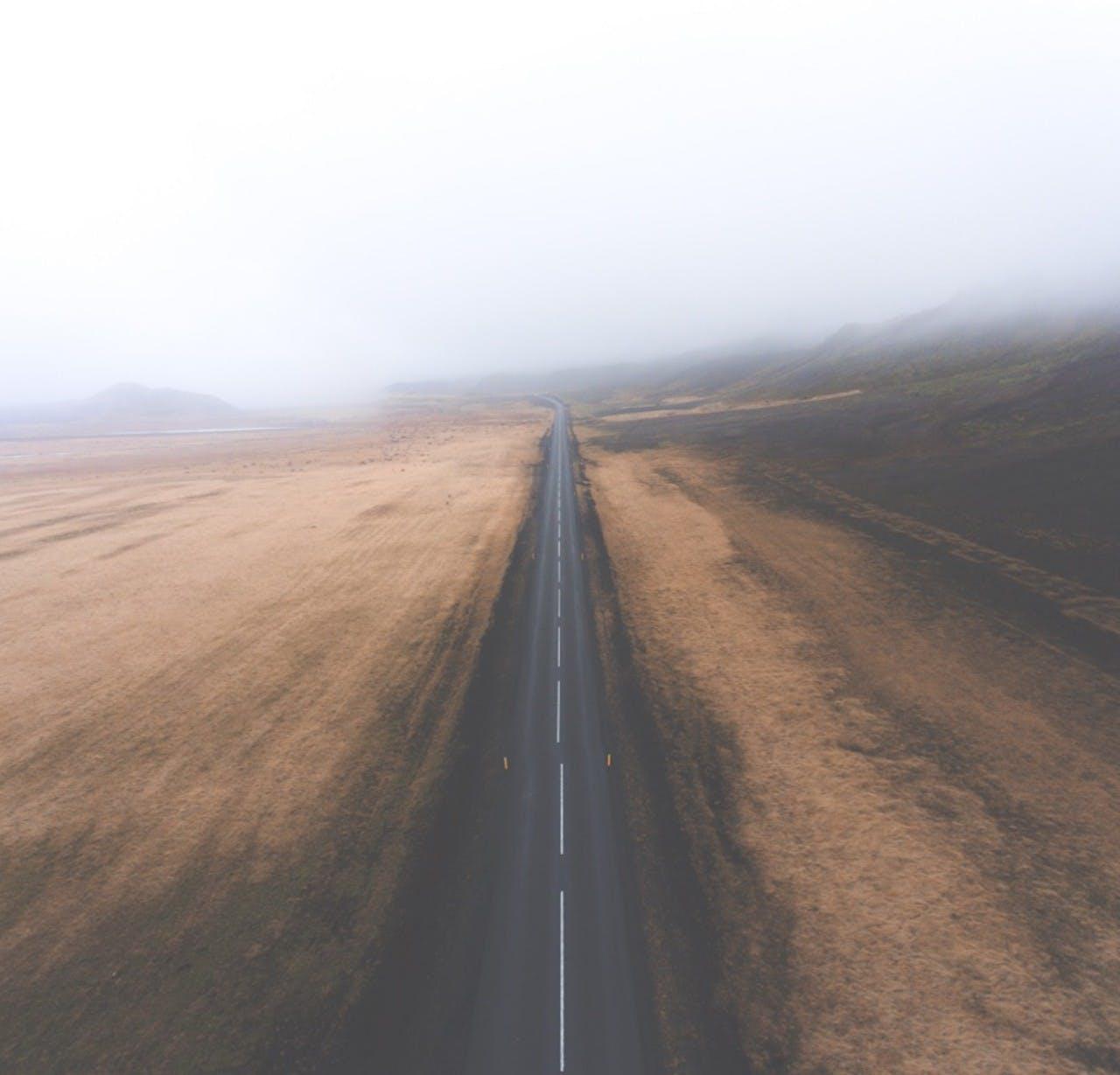Iceland Weather in February - What to Expect
| All, weather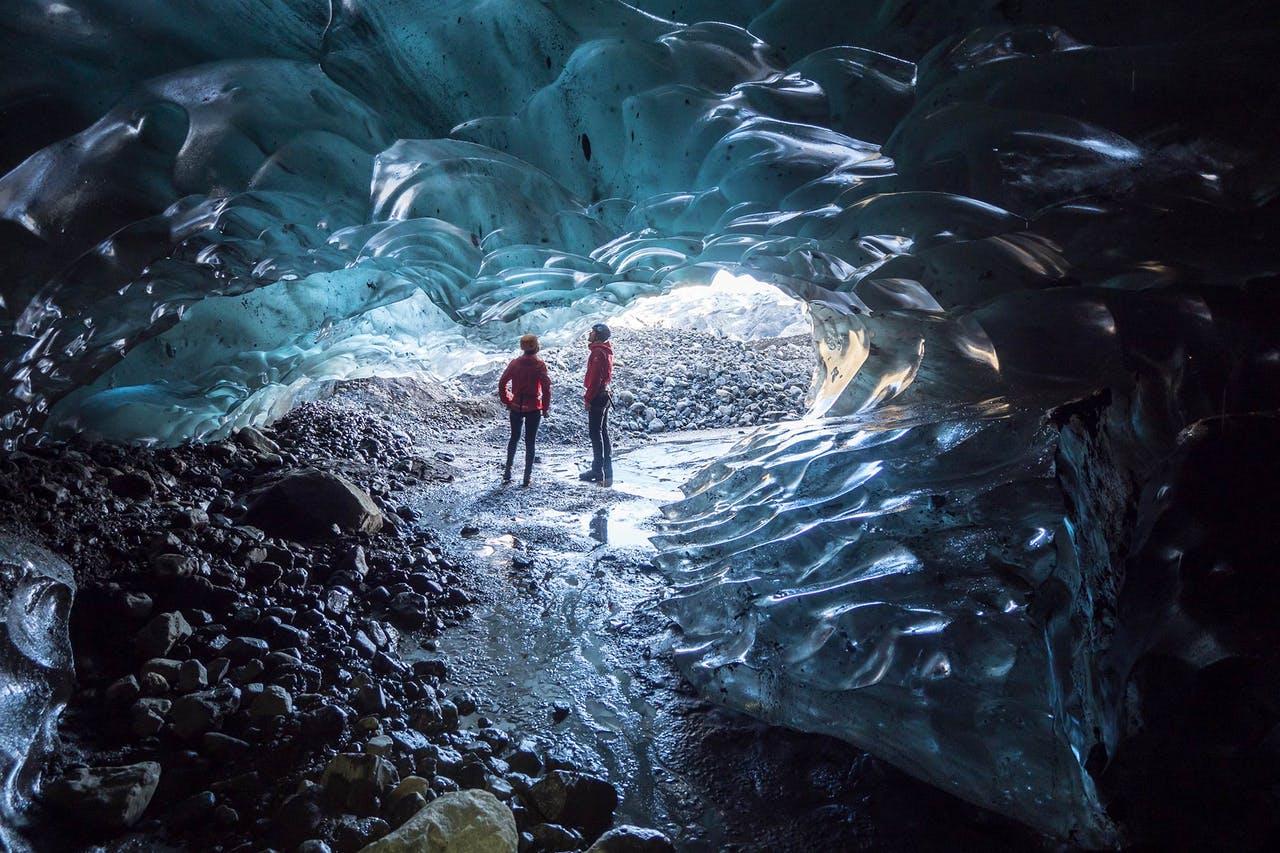
Dazzling landscapes and picturesque views make up the landscape of Iceland all year round. There's truly never an unpleasant time of year to visit Iceland, and in the end, it's all about personal preference.
The weather in Iceland in February is actually quite mild when compared to other climates of countries sitting on a similar latitude. If you're planning on having your chance at getting a view of the Northern Lights, February is one of the prime months to plan your visit. You’ll also have the opportunity to experience Iceland’s majestic ice caves and glacier hikes, as the temperatures remain cold enough to keep all of their beauty intact.
Expect some snowfall and a wintry experience during your visit, but if you come prepared, you'll only enjoy everything this beautiful country has to offer.
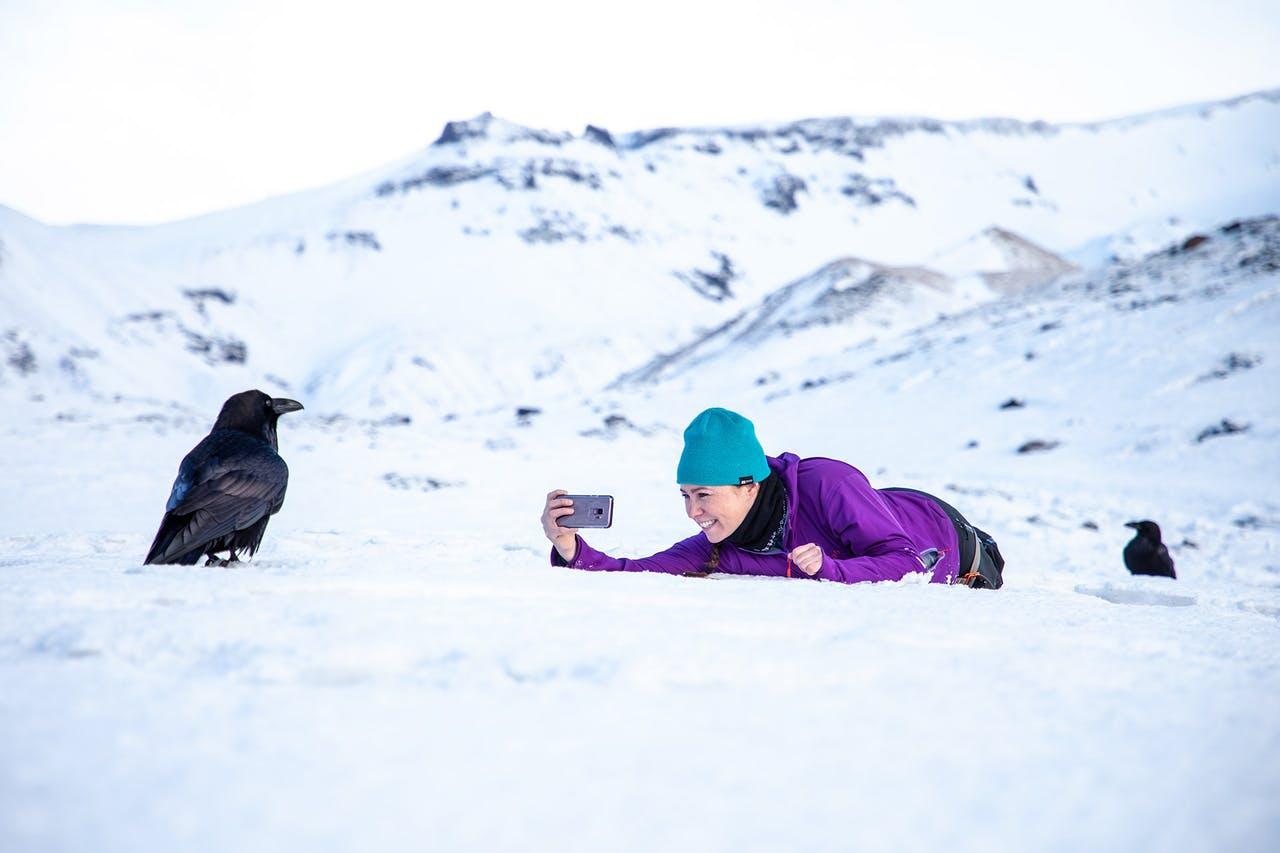
Quick Facts on Iceland in February
Average temperature: 0°C/32°F
High temperature: 2°C/36°F
Low temperature: -2°C/28°F
Average Daylight: 7 hours 6 minutes
Average Rainfall: 40mm/1.5 inches
Average Rainy Days: 16 days
Weather conditions in Iceland in February
Iceland’s weather in February can be summed up as the traditional Nordic winter. Expect freezing points temperatures on average, with some snow accumulation, all of which make the country even more exciting to visit during this special period of the year.
Average temperature
During the month of February, you can expect the average temperature in Iceland to hover around 0°C. You’ll want to make sure you pack right and dress warmly if you’re planning to explore and get the most out of Iceland. Low temperatures will generally hover around -2°C around Iceland’s cost, whereas you can run into much colder temperatures if heading inland towards the inner island, for example near the Golden Circle. These much colder temperatures are caused by a Northerly wind, which makes the real feel much lower than what the thermostat might show. Generally, high temperatures in February can reach around 2°C.
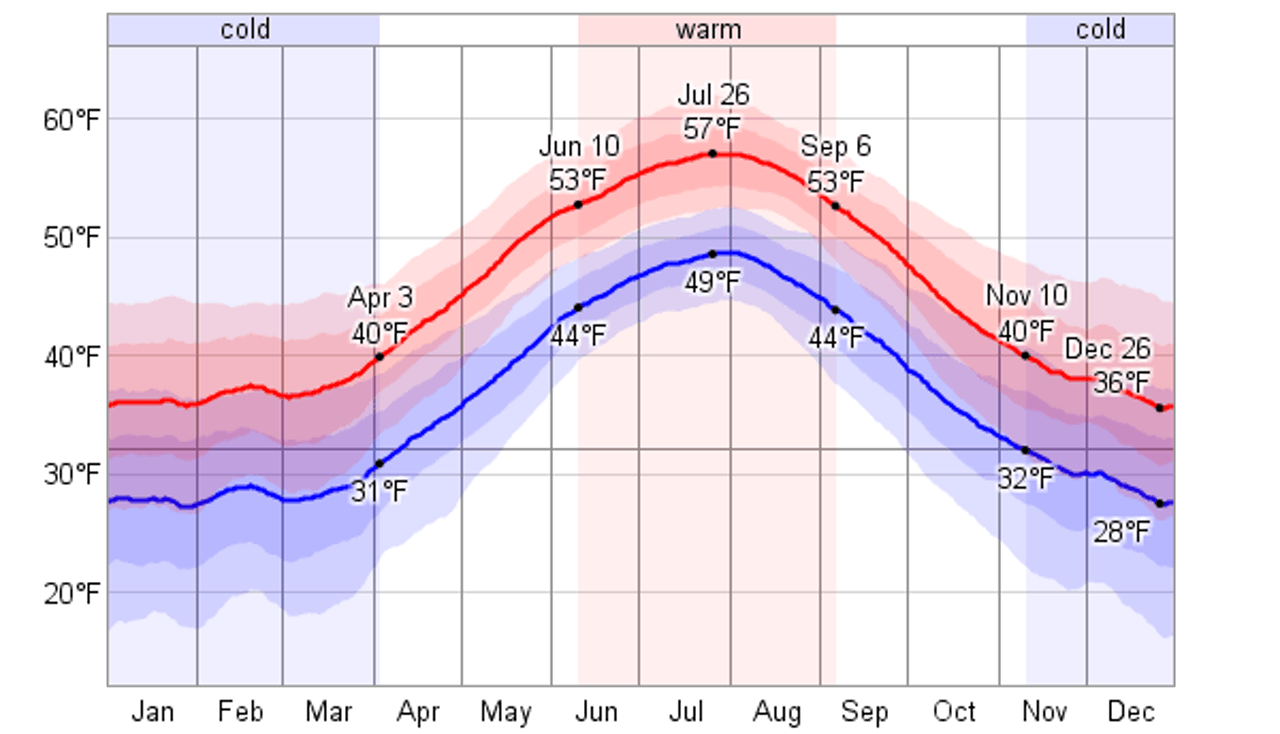
There’s not much of a fluctuation in terms of temperature during this month, so you’ll know exactly what to expect and how to properly prepare. Thanks to the relatively warm gulf stream that sweeps through the country during February, you can expect much more comfortable temperatures than during the other winter months.
Daylight in Iceland during February
During February, days are approximately 7 hours long and by the end of the month, you can already expect much more light coverage to penetrate the island, as each day will gain about 6-7 minutes of additional sunlight. If you’re planning on doing some tours during the daylight hours, you won’t have to worry as the additional minutes of light each day really add up by the end of the month.
February is truly a great month to visit Iceland, as there’s plenty of daylight to do sightseeing and activities during the day, and still plenty of time at night to catch The Northern Lights!

Precipitation & snow
Snowfall in Iceland normally starts as early as September and can last way into May. You definitely will want to expect and be prepared for snow during your trip, which also should be taken into consideration if you plan on undertaking any type of self-drive activities. There are frequently road closures that do happen throughout the island, so you’ll want to keep a close eye before heading out.
If you’re not comfortable with self-drive-style activities as a way to visit Iceland’s sights, there are plenty of experienced drivers and tours which can help you navigate Iceland in a safe-manner during the winter months.

What to Pack & Wear in February
Keeping in mind the wintry conditions during February in Iceland, you’re going to want to make sure you have all of the necessary gear to keep you warm and ready to have a great time. Staying both warm and dry is going to be essential for ensuring you remain in the perfect state to truly get the most out of your trip.
A great starting point for packing your wardrobe would be a high-quality, Insulated jacket. Not only will you be fighting a bit of snow, but the winds can pick up a bit, so you’ll want to ensure you keep your body heat contained within that nice warm jacket. Underneath that jacket, don't forget to layer up with a few other warm essentials such as sweaters and long-sleeve shirts to help you stay protected from the wind and water elements.
Other essentials would be to include windproof gloves in your packing list, which are also water-resistant if you're planning to do snow-based activities. Pair those windproof gloves along with a warm winter hat to keep your head and ears from getting cold as well.
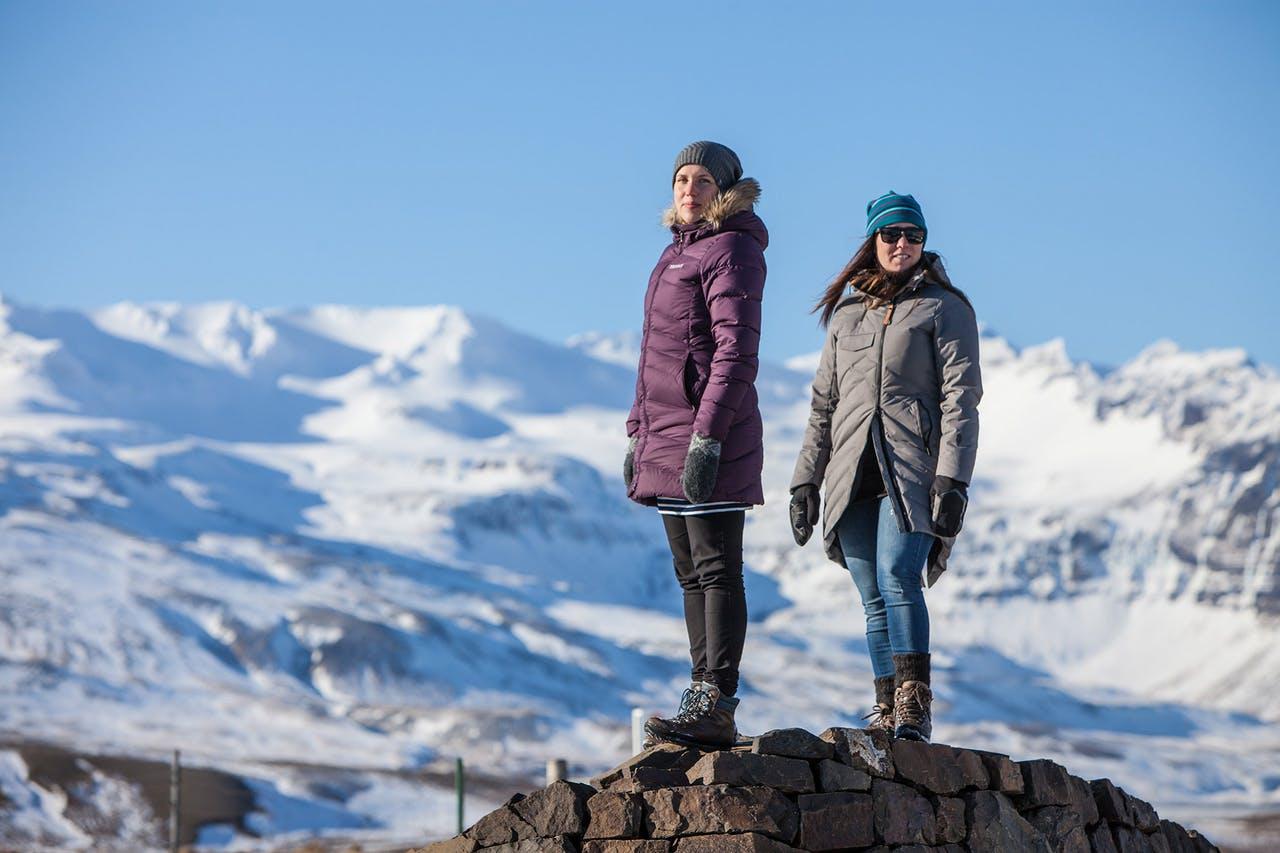
In terms of shoes, you’re going to want something that is both sturdy and reliable to make getting around much easier. Coming only with a pair of tennis shoes will probably land you in a world of trouble, so make sure you bring along a pair of insulated boots that can get the job done. When you're hiking across Iceland's terrain, the wind will be blowing wind, snow, slush, and everything in between, so you're going to want to ensure you keep those feet both dry and warm. Nothing can be worse than a pair of cold, wet feet in freezing temperatures!
Bringing a pair of sunglasses also comes highly recommended, as the low placement of the sun in the sky can cause difficulty in seeing, especially if you plan on hitting the open road.
On the opposite end of the spectrum, if you’re planning on visiting Iceland’s thermal baths scattered throughout the country or even the Blue Lagoon, don’t forget to pack appropriate swimming clothes so you’re ready to take a dip and warm yourself up in the heated, thermal waters.
Driving
There are certain precautions to keep in mind if you’re planning to drive in Iceland during the winter months. Due to snowfall and precipitation on the island, road closures are quite frequent and can throw a wrench into travel plans. Apart from road closures, certain areas of the island will be off-limits and restricted, as they’re simply not reachable.
Potential Storms & Driving Conditions
Driving in the winter months through Iceland can be a challenging feat, not only on the road but navigating closures that can occur due to wintry conditions. Snow and ice storms happen quite frequently in Iceland during February, so in order to be best prepared, you’ll need to keep a close eye on road conditions before embarking on a self-drive journey. With that being said, road conditions are overall are still much more favorable than in January, with less frequent road closures on the main Ring Road. Generally, when traveling in a safe manner, these roads will be accessible and possible to use in order to reach some of Iceland’s favorite attractions.
Road.is is an excellent resource to keep on hand to stay up-to-date with current conditions. SafeTravel.is comes as another highly recommended resource providing alerts, preparation methods for the outdoors, and all-around travel advice for having a safe trip when in Iceland.
It’s best to avoid any type of dangerous situation, and although driving in Iceland can be both very rewarding and safe, you need to be fully prepared and have a well-planned route. Along with this, you must stay up to date on current conditions, as they can change very quickly.
In the best-case scenario, experienced drivers and guides have the knowledge of both the roads and weather conditions in Iceland, and can be an excellent way to embrace all of the island’s beauty.
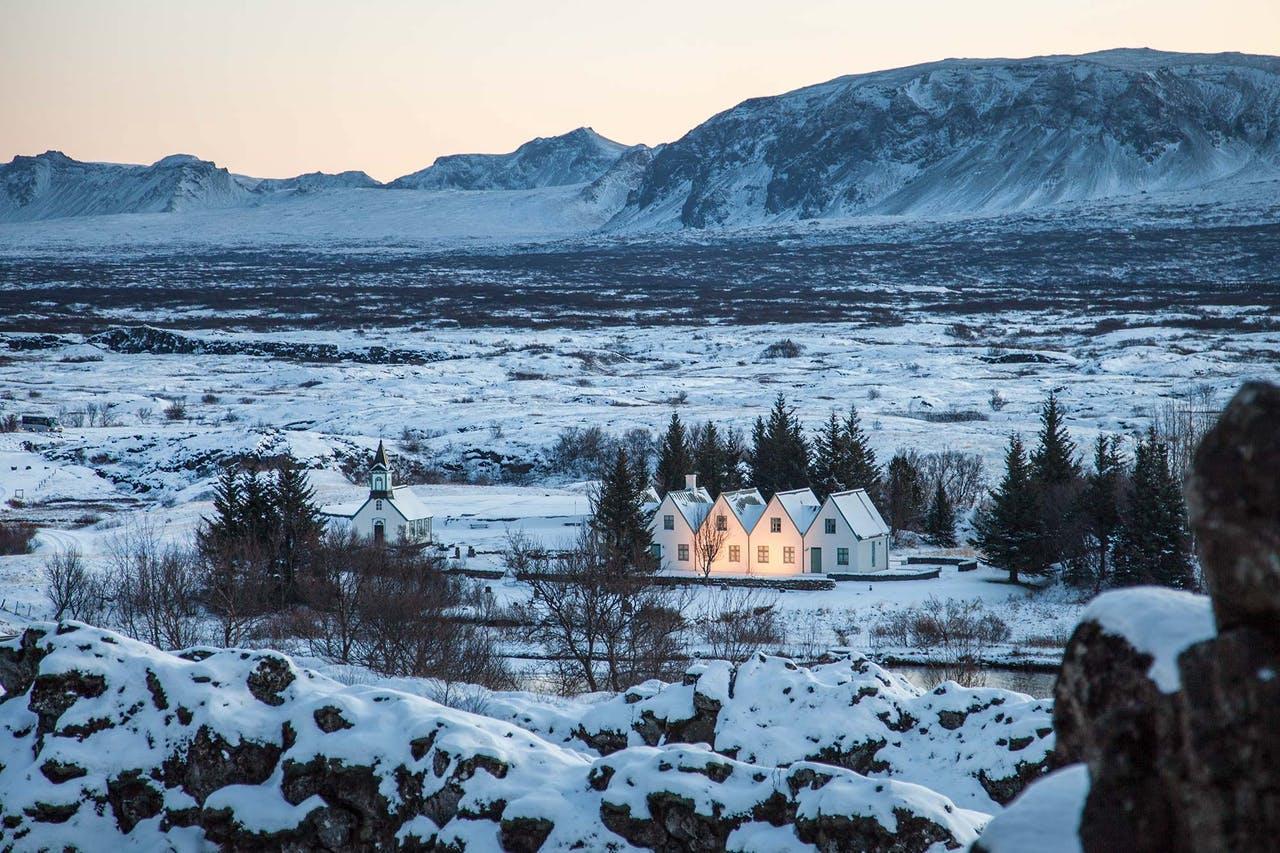
Activities & Tours in Icelandic nature
Due to the wintry Nordic conditions of February, you might think Iceland comes to somewhat of a standstill during this month. Quite the contrary is true, as the country really starts to come alive with plenty of outdoor activities at hand, as local events and festivals that Reykjavík itself has to offer.
Northern Lights
The Northern Lights are at their all-time high during the dark, wintry months. If you want to give yourself the best chance at seeing the lights in their full glory, you’ve chosen the right time to be in Iceland. With only two hours of sunshine per day, and a total of seven hours of daylight on average during the month of February, there’s plenty of time to get and go light hunting.
Although it is possible to see the lights from time-to-time within Reykjavík’s city limits, it’s definitely recommended to venture a bit further outside of the city away from light pollution to truly enjoy the many colors the lights have to offer.
Due to the winter road conditions, if you’re not up for a self-drive, there’s plenty of guided Northern Light experiences that can help you to get outside of the city to Iceland’s most stunning locations to see the Northern Lights.
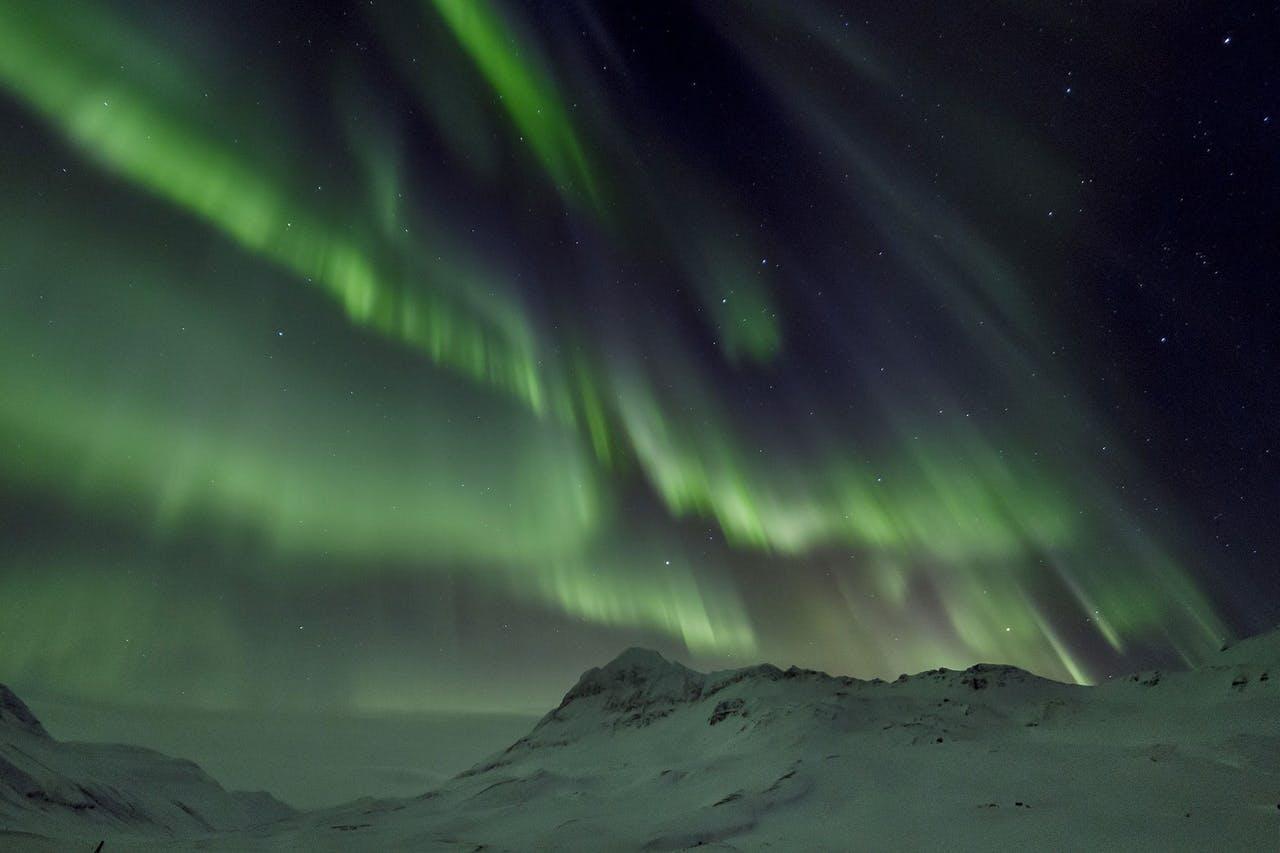
Iceland’s Ice Caves & Glacier Hiking
February is one of the best months of the year to visit Iceland’s many ice caves. The cold temperatures help to ensure the sturdiness and safety of the internal structures built by the hands of mother nature. If you’re traveling to Iceland with the ice caves in mind, be sure to book a trip in advance, as February is one of the most popular months for ice cave visitors.
It’s not possible to visit the ice caves without an experienced guide, due to the extreme danger that they can present, so plan ahead so you don’t miss your chance at this spectacle.
The month of February also presents the perfect chance to take part in a glacier hiking tour. If you miss your chance at one of the ice caves, taking part in the glacier hike can be another great way to experience the beautiful shades of blue given off by the island’s blue ice walls and natural ice formations.
Outside of the ice caves and glacier hiking, the winter month of February gives visitors the perfect chance to visit the partially frozen waterfalls, such as Gullfoss, which lie scattered across the Golden Circle. Don’t forget to also venture to the Southern coast to check out Skógafoss and Seljalandsfoss.
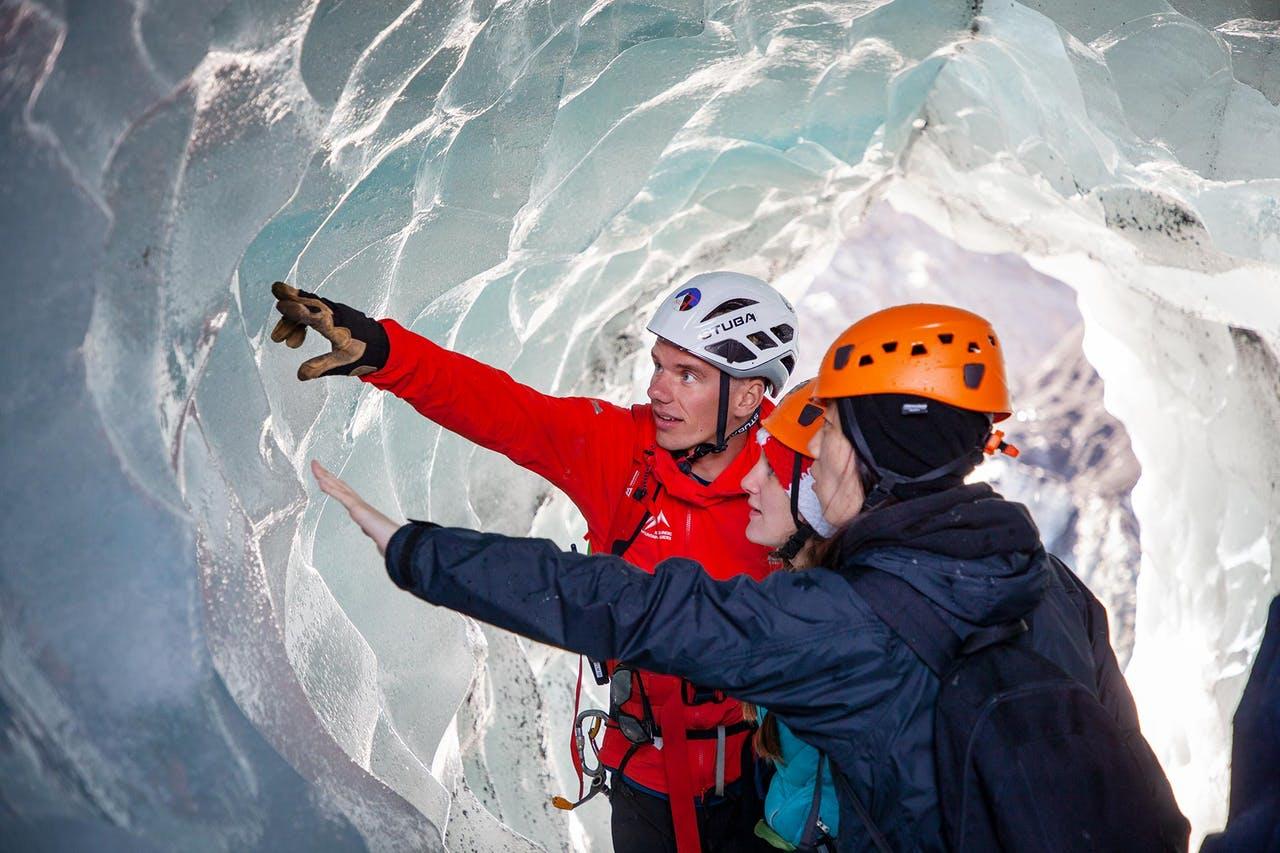
What to do around Reykjavík in February
There’s plenty happening each and every month in and around Reykjavík. February is an extra special month, with tons of winter events to enjoy and see the true face of Iceland.
Events & Festivals
Reykjavík Winter Lights Festival
Each and every year during the first weekend of February, Icelanders and tourists alike come together to celebrate the lengthening of daylight after the long period of darkness during the winter months. Throughout Reykjavík, colorful lights are projected onto the facades of buildings, which helps to create a miraculous atmosphere that can’t be found during other months of the year.
Also taking place are cultural and outdoor activities, including Museum Night (entry free of charge to the best Reykjavík has to offer!), and Pool Night - again, free access to the city’s geothermal pools along with music and light decorations. Pack your warm clothes and swimsuit if you’re coming in February, and get ready for a truly memorable experience!
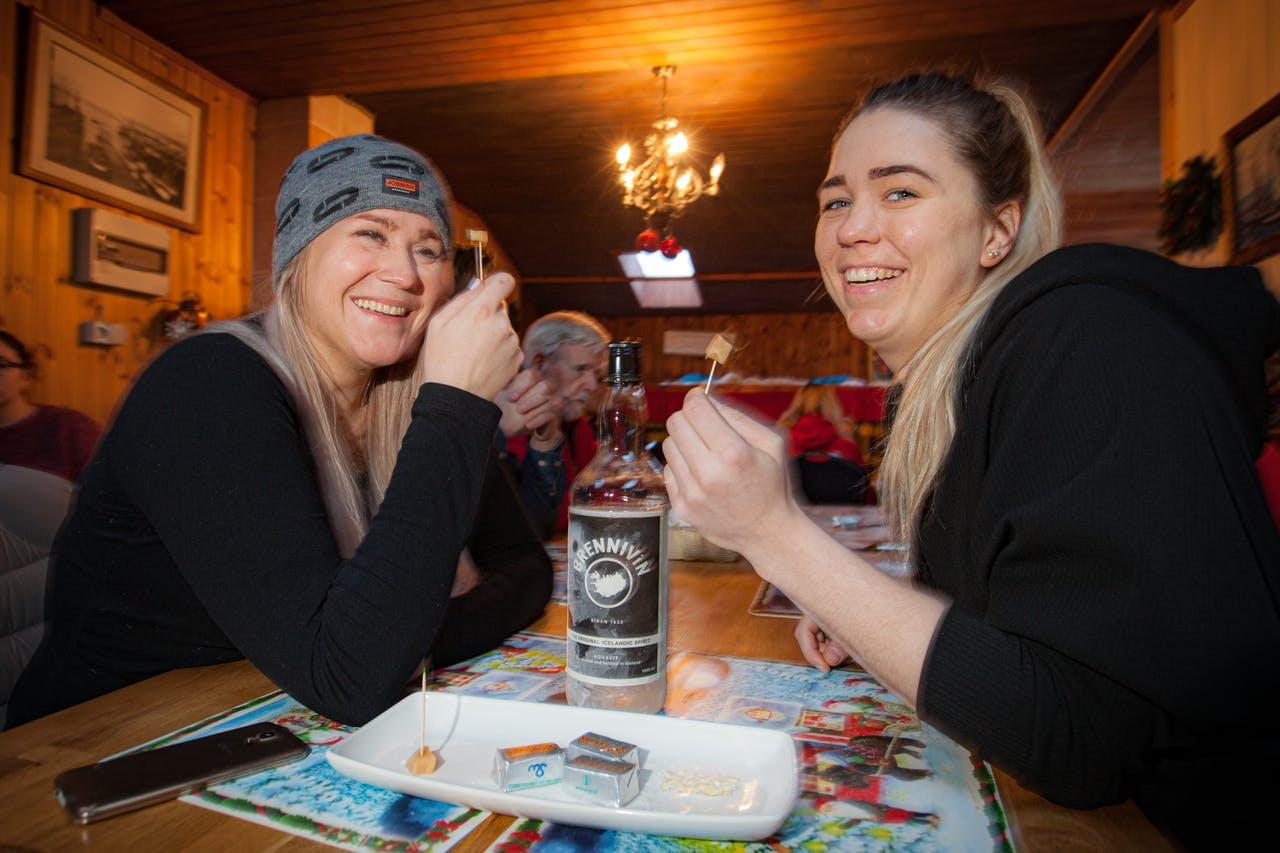
The Food and Fun Festival
This annual festival brings together Iceland's best chefs, and chefs from all around the world, to showcase the true taste of the island. Each chef will be assigned to a participating restaurant, where they then use local Icelandic ingredients to handcraft their own tasty creations for locals and tourists alike. Included in this event on the last day of the festival is a competition where all chefs come together and compete against one another in creating a three-course meal. If you're a foodie and enjoy tasting new flavors and ingredients, you don't want to miss this event.
Holidays
Luckily for tourists, there are no public holidays in Iceland during the month of February. You can expect all establishments to operate as normal. With this in mind, there is one special day that is celebrated which goes by the name of Konudagur, or woman’s day. Falling on Sunday between February 18th and 24th, woman’s day is an old tradition in Iceland dating back to the mid-19th century. If you’re coming with a special loved one to Iceland during this time period, be ready to enjoy this lovely holiday together!
Keep me informed about the Icelandic Mountain Guides Blog
Outdoor adventure in Iceland is our specialty. Subscribe to our free monthly newsletter to learn when to go, what to do and where to have the best adventures in Iceland.
Related Blog Posts
Related Tours

Glacier Walk & Northern Lights
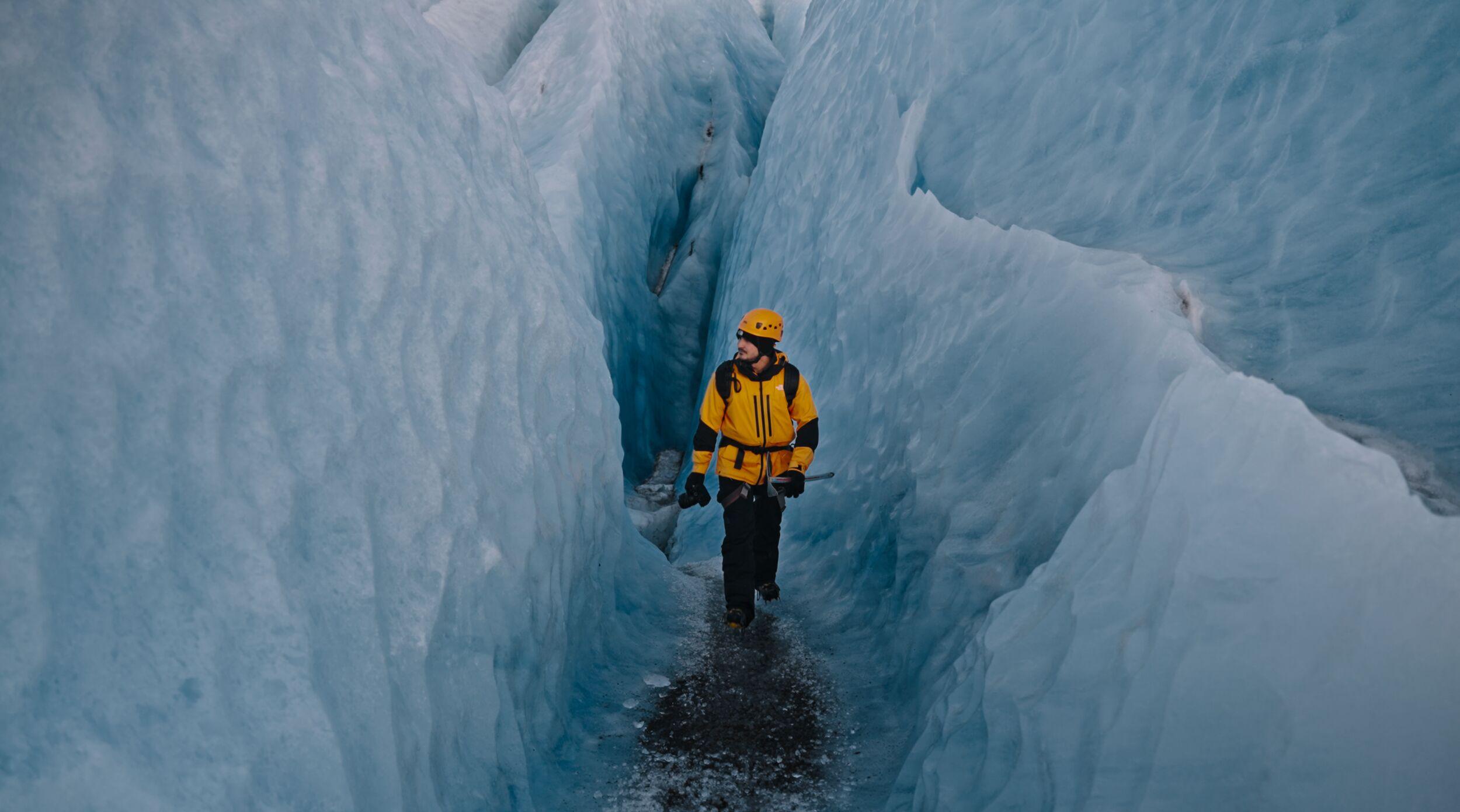
Blue Ice Experience - 3.5-hour Skaftafell Glacier Hike
